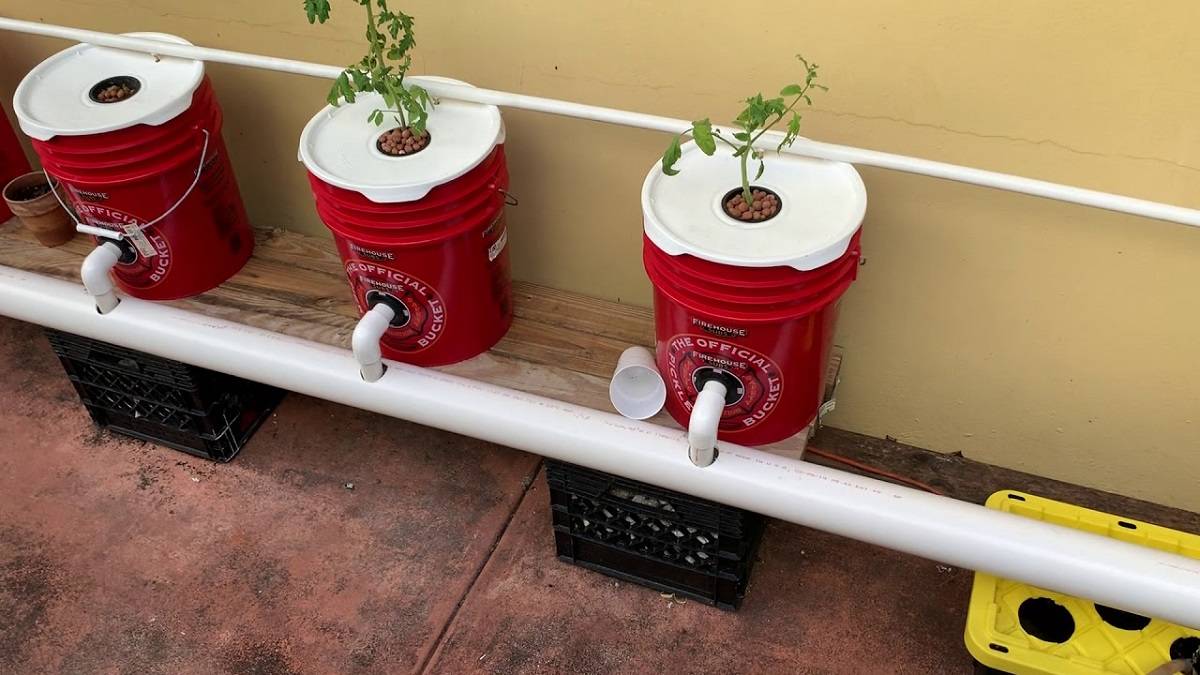
There are several types of hydroponic systems, many of which have muddled names like nutrient film technique, deep water culture, etc. A hydroponic system that has been in use for hundreds of years is, the deep-water culture system. As Deep-water Culture (DWC) requires less frequent watering than other kinds of hydroponic systems, it is a more sophisticated kind of hydroponics.
This article explains how to build up your own hydroponic deep water farming system. But before we look into the setup of DWC let's know what exactly is DWC.
What Is Deep Water Culture (DWC)?
A hydroponic technique called deep water culture (DWC) suspends plant roots in a solution of nutrient-rich, oxygenated water. This approach, also referred to as deep flow technique (DFT), floating raft technology (FRT), or raceway, makes use of a rectangular tank that is less than one foot deep and is filled with a nutrient-rich solution.
Deep Water Culture (DWC) System Components
Growing Bed
All you need to set up this system in your kitchen garden is a tub-style container or something similar that can hold the fertilizer solution. You may choose from any unwanted household goods, such as tubs and buckets.
Lid or Cover
Use the lid that came with the container, paint bucket, or tub you were using.
Nutrients
Since water serves as the growing medium in this situation, external plant feeding becomes crucial. For the same, we can rely on our in-house selection of nutrients.
Air Pump
Oxygen is a need for the roots of the plant, in addition to water and nutrients. Thus, oxygenating water requires the use of an air pump. A standard aquarium pump may accomplish the task rather effectively. You can alternatively omit this step and manually oxygenate the water by gently shaking (or stirring) it each day or by blowing air through a straw into the container.
Establishing a Hydroponic DWC System: Step-by-Step process
We'll go into more detail on how to set up our first hydroponic DWC system. Similar guidelines can be used to set up your system.
Step 1: Germination of the seed
Get the seeds to sprout. You have the option of starting seeds in net pots or regular seed germination trays. The benefit of utilizing net-pots is that you won't have to move the sapling to the grow bed, minimizing the possibility of injuring the roots or causing transplant shock.
Step 2: Setting Up the Grow Bed
Prepare the grow beds or containers you'll be using to cultivate your vegetables. Make sure there are no leaks and that the container or bed is watertight. (In DWC, you want the water to stay in the pot and be used up fully, in contrast to regular pots with drainage holes.) Use plain water to check the grow bed for any leaks.
Step 3: Lid Preparation
Make enough holes in the lid of the container. The hole should be large enough to accommodate the building that will house the sapling with ease. For the same, you can use regular 2-inch net-pots. You may simply use a regular home sponge to save on expenditures. Make the required number of holes in the lid.
Step 4: Making the Nutrient Solution
You can combine the nutrients with water to create a nutrition solution. If you're utilizing our supplements, follow the instructions that are included with them or contact our support line to get help.
Step 5: Setting up the DWC System
Put the fertilizer solution into the growing container. Fill it up till it almost reaches the building holding the sapling (net-pots or sponge). You won't need to bother about watering your plants every day because this will guarantee that their roots receive the water through wicking activity.
Fill the growing container to a level that prevents plant roots from ever drying out. Slowly, roots will start to show through the net pot, and even if the water level is dropping, you won't need to water the plants since the roots will still be submerged in water. Roots may take water further down as the amount of the nutritional solution decreases, negating the need for regular watering.
Step 6: Plant and enjoy witnessing your plants flourish.
You're done after you transplant the seedling into a growing container. Your Hydroponics DWC system is functional.
Regular DWC System Maintenance and maintenance
The system won't need much upkeep once it's up and running. The few things you should routinely check for are as follows: -
Managing pH Level: Only when the pH of the nutrition solution is within a certain range can plant roots absorb nutrients (between 5.5 to 7.0 for the majority of plants, depending upon plant variety and species). To test pH, you can use a straightforward pH meter or pH strips from a chemical lab.
Topping up Nutrient Solution: Adding more nutrients to the nutrition solution is necessary because when plants take nutrients up from the solution, there will be less of each nutrient available. Therefore, it might be necessary to periodically top off the nutritional solution (weekly or bimonthly).
Oxygenating of nutrient solution: As was said before in this text, occasional oxygenation of the nutrition solution will be necessary for healthy development.
Note: Last but not least, keep an eye out for pests or other signs that your plants are in trouble.











